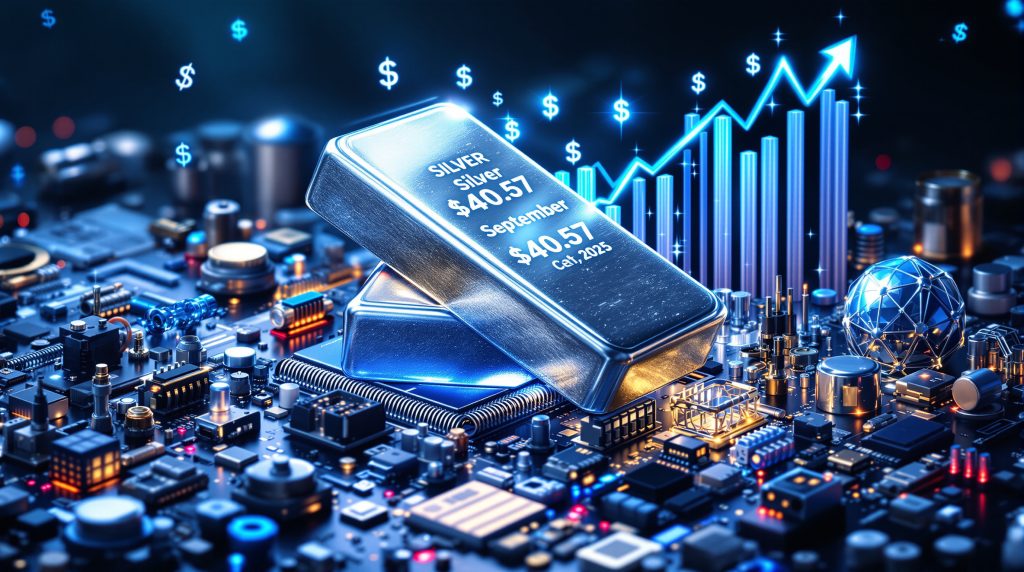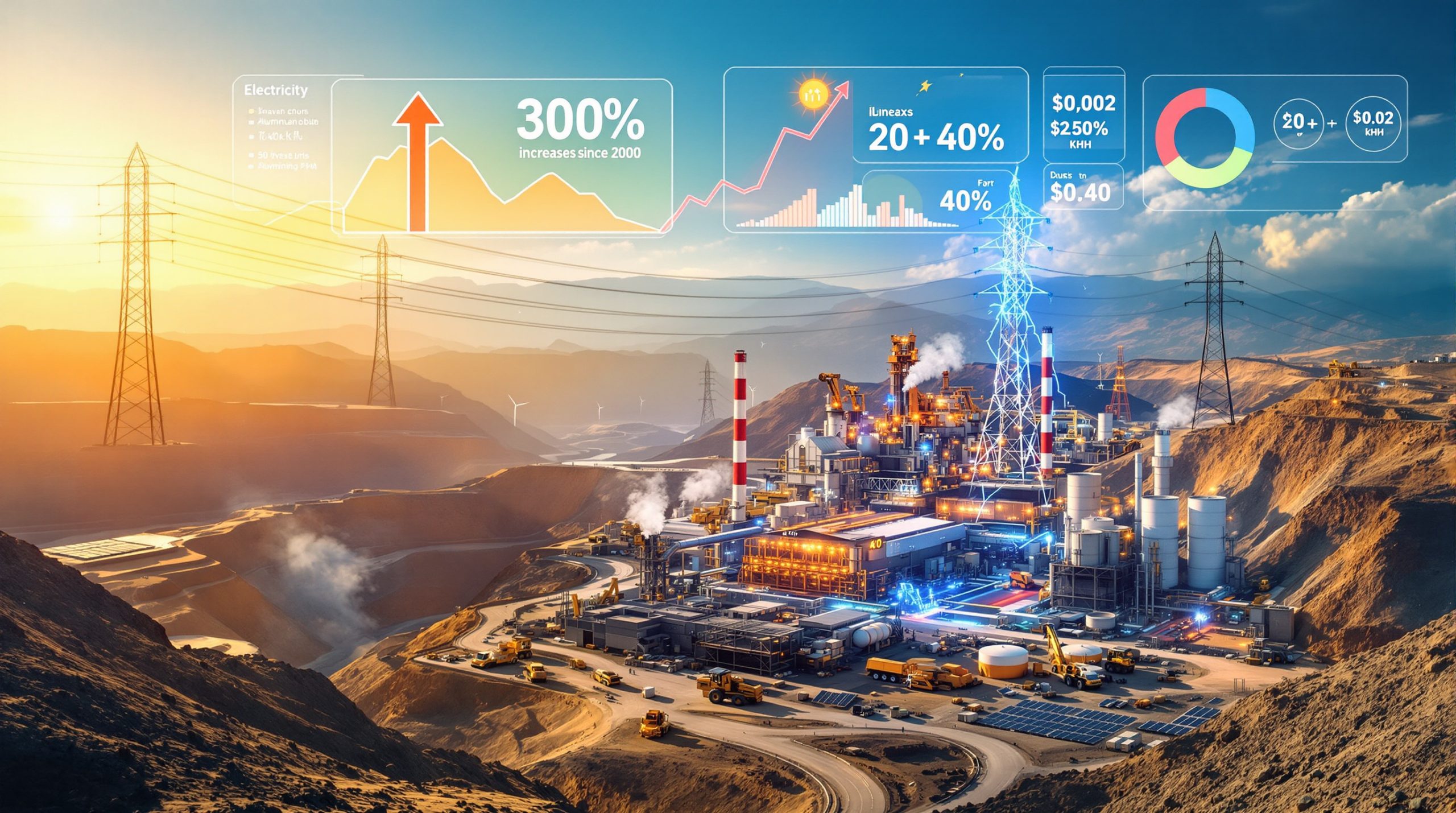Silver Prices Reach Historic Highs: What's Driving the 2025 Precious Metals Rally?
Silver has shattered the crucial $40 barrier, reaching $40.57 per ounce as of September 2025—a level not seen in 14 years. This remarkable 45% year-to-date increase has caught the attention of both seasoned precious metals investors and newcomers to the market. The breakthrough past the significant $40 resistance level signals a potentially transformative period for the silver market.
Key Price Milestones for Silver in 2025
| Time Period | Silver Price | Percentage Change |
|---|---|---|
| September 2024 | $28.00 | Baseline |
| September 2025 | $40.57 | +45% year-over-year |
| Projected EOY 2025 | ~$45.00 | +60% from 2024 |
| Previous Record (2011) | $47.94 | – |
| All-Time High (1980) | $49.95 | – |
Market Conditions Creating the Perfect Storm
The current rally represents a rare market condition where silver prices reach historic highs while premiums on physical silver products remain unusually low. This creates an advantageous situation for investors, as secondary market products from profit-takers help drive down premiums despite the price surge. Industry experts note that premiums on physical silver are hovering near decade-low levels, creating a unique buying opportunity despite the significant price appreciation.
How Are Macroeconomic Factors Influencing Silver Prices?
Interest Rate Expectations and Monetary Policy
The Federal Reserve's anticipated pivot toward interest rate cuts has created a bullish environment for precious metals. With inflation still above desired levels despite previous rate hikes, the market is pricing in multiple rate cuts for the remainder of 2025, which typically weakens the dollar and strengthens precious metals as alternative stores of value.
Financial analysts point to the inverse relationship between interest rates and precious metals prices. As rates decline, the opportunity cost of holding non-yielding assets like silver decreases, making them more attractive to investors seeking wealth preservation in uncertain economic environments.
Trade Uncertainty and Tariff Complications
Recent legal challenges to tariff policies have introduced significant uncertainty into global trade. A late August 2025 court of appeals ruling against the administration's tariff impact on markets has created market volatility. This uncertainty, combined with countries forming new trade alliances that bypass traditional U.S.-centered supply chains, has investors seeking safe-haven assets.
The court ruling represents a key inflection point for markets, as it calls into question the sustainability of protectionist trade policies that had previously been priced into various asset classes. As markets recalibrate to this new reality, precious metals have benefited from their traditional role as a hedge against policy uncertainty.
Dollar Weakness and Inflation Persistence
The U.S. dollar has shown consistent weakness throughout 2025, providing immediate positive effects on precious metals prices. Meanwhile, inflation continues to exceed target levels, with consumers experiencing persistently high prices for everyday goods and services. These twin pressures create ideal conditions for precious metals appreciation.
Market observers note that the currency effect alone has been significant for silver prices. As the dollar weakens against other major currencies, commodities priced in dollars become less expensive for foreign buyers, increasing demand and supporting higher prices. This relationship remains one of the most reliable predictors of precious metals performance.
Why Is Silver Outperforming Other Metals in 2025?
Industrial Demand Explosion
Silver's dual role as both a precious and industrial metal gives it unique market dynamics. The metal's essential role in green technologies—particularly solar panels, electric vehicles, and advanced electronics—has created unprecedented industrial demand. This technological demand provides fundamental support beyond investment flows.
Recent industry reports highlight that a single electric vehicle uses approximately 25-50 grams of silver in various electrical connections and battery components. With global EV production projected to exceed 30 million units in 2025, this sector alone represents a significant source of demand growth. Similarly, photovoltaic installations continue to accelerate globally, with each solar panel requiring between 15-20 grams of silver.
Supply-Demand Imbalance
The silver market is experiencing its fifth consecutive year of supply deficits, with demand exceeding production by approximately 140-150 million ounces annually. Mining production has struggled to keep pace due to declining ore grades and reduced byproduct mining activity from base metal operations.
Industry experts point to several factors complicating the supply picture. First, approximately 70% of silver production comes as a byproduct of mining other metals, primarily lead, zinc, and copper. As production of these base metals has faced challenges, silver output has consequently suffered. Second, average ore grades at primary silver mines have declined approximately 25% over the past decade, requiring more ore to be processed for the same silver yield.
Market Size Dynamics
Unlike gold, silver operates in a relatively thin marketplace where even moderate increases in investment demand can have outsized effects on price. This market characteristic amplifies price movements when new investors enter the space, as is currently happening with the silver market squeeze affecting global finance.
The total annual silver market is valued at approximately $25 billion, compared to gold's market of over $180 billion. This relatively small size means that even modest capital inflows can significantly impact silver prices. Market analysts estimate that a $1 billion shift from other assets into silver represents about 4% of the annual market, enough to meaningfully influence price discovery.
What Are Market Experts Forecasting for Silver's Future?
Price Projections Through 2025
Market analysts project silver could average around $45 per ounce by the end of 2025, with some forecasts suggesting potential moves toward the $50 mark if current fundamentals persist. However, experts caution that consolidation periods are normal and inevitable, even within strong bull markets.
Technical analysts note that the $50 level represents a psychologically significant barrier that has twice repelled silver rallies in recent decades. Breaking above this level would require a combination of continued industrial demand strength, persistent investment inflows, and supportive macroeconomic conditions.
Seasonal Factors and Historical Patterns
Precious metals markets typically experience increased activity during fall months, with historically stronger price performance compared to summer. This seasonal pattern, combined with the current momentum, suggests continued strength through the remainder of 2025.
Analysis of silver price performance over the past 20 years reveals that September through November has provided positive returns approximately 65% of the time, with average gains exceeding those of summer months by nearly 2 percentage points. This seasonal strength often coincides with increased jewelry demand ahead of holiday seasons and year-end portfolio rebalancing by institutional investors.
Technical Analysis and Market Sentiment
The breakthrough above the critical $40 resistance level represents a significant technical achievement that could attract additional momentum-based investment. Chart patterns indicate potential for further upside, though periodic consolidation should be expected.
Market positioning data shows commercial traders (typically hedgers) increasing their short positions while speculative traders have expanded their long exposure. This divergence often occurs during strong price advances and suggests growing potential for short-term volatility and possible consolidation phases before the next leg higher.
How Should Investors Approach Silver at Current Price Levels?
Strategic Entry Points and Dollar-Cost Averaging
Despite the excitement of new highs, financial advisors recommend strategic, measured approaches to silver investment. Dollar-cost averaging—making regular purchases over time rather than large one-time investments—can help manage volatility risk.
This approach acknowledges silver's historical volatility, with standard deviations in monthly returns approximately 30% higher than gold. By spreading purchases across multiple entry points, investors can reduce the impact of this volatility while maintaining exposure to the overall trend.
Physical vs. Paper Silver Considerations
Physical silver currently offers an unusual advantage with low premiums despite rising spot prices. This creates opportunities for those seeking tangible assets, though investors should understand the storage and liquidity implications of physical ownership.
Recent market dynamics have created a situation where secondary market supply has increased as long-term holders take profits, pushing premiums down to approximately 3-5% for common bullion products compared to historical averages of 8-12%. This compression of premiums makes physical silver relatively more attractive than paper alternatives for those seeking direct metal ownership.
Portfolio Allocation Strategies
Financial professionals typically recommend precious metals comprise 5-15% of a well-diversified portfolio, depending on individual risk tolerance and financial goals. The current market environment may justify positions toward the higher end of that range for some investors.
Portfolio managers note that silver's correlation with traditional financial assets like stocks and bonds tends to decrease during periods of economic stress, enhancing its value as a diversification tool. Additionally, silver's industrial applications provide partial insulation from purely monetary and sentiment-driven price swings that sometimes affect gold.
What Are the Risks to the Current Silver Rally?
Potential Market Corrections
While fundamentals support higher prices, silver markets historically experience significant volatility. Investors should prepare for potential 10-20% corrections even within sustained bull markets.
Analysis of previous silver bull markets reveals that 15-25% retracements occurred approximately every 3-6 months even during the strongest uptrends. These corrections often serve to reset market sentiment and establish new support levels before resuming the broader trend.
Central Bank Policy Shifts
Any unexpected pivot back toward monetary tightening could temporarily pressure precious metals prices. Investors should monitor Federal Reserve communications for signals that might affect market sentiment.
Recent history demonstrates the sensitivity of precious metals to changes in central bank rhetoric. During the 2013 "taper tantrum," silver prices declined over 30% in response to the Federal Reserve signaling a reduction in asset purchases. While current conditions differ significantly, this example illustrates the potential impact of unexpected policy shifts.
Geopolitical Resolution Scenarios
Resolution of current geopolitical tensions could reduce safe-haven demand, though industrial demand would likely remain strong regardless of political developments.
Market strategists note that approximately 20-25% of recent price support can be attributed to geopolitical risk premiums. Any meaningful de-escalation could result in this premium being partially or fully removed, creating potential headwinds for price appreciation in the near term.
How Does Silver's Performance Compare to Gold in 2025?
Gold's Record-Breaking Performance
Gold futures have also reached all-time highs in 2025, hitting $3,552 per ounce. The yellow metal has gained approximately 34% year-to-date, showing strong performance but lagging silver's percentage gains according to gold price forecast experts.
This performance disparity reflects silver's higher beta characteristics compared to gold. During precious metals bull markets, silver typically outperforms gold on a percentage basis, while during bearish periods, silver tends to decline more dramatically. This pattern has repeated consistently across market cycles.
Silver-to-Gold Ratio Analysis
The silver-to-gold ratio has compressed significantly during 2025, moving from over 80:1 to below 70:1, indicating silver's outperformance. Historically, this ratio compression often continues during precious metals bull markets, as shown in recent gold-silver ratio insights.
During the 2011 precious metals peak, the silver-to-gold ratio reached approximately 30:1, suggesting potential for further compression from current levels if historical patterns repeat. Ratio analysis represents one of the most watched metrics among precious metals traders for identifying relative value opportunities between the two metals.
Different Demand Drivers
While both metals benefit from investment demand and dollar weakness, silver's industrial applications create additional price support that gold lacks. This industrial component helps explain silver's stronger percentage performance in 2025.
Industrial applications account for approximately 50% of annual silver demand compared to less than 10% for gold. This fundamental difference means silver prices respond to both monetary factors and industrial growth expectations, providing additional catalysts during periods of economic expansion.
FAQs About the 2025 Silver Market
Will silver prices continue rising through 2025?
While no one can predict markets with certainty, fundamental factors including supply deficits, industrial demand growth, and monetary policy support continued strength. However, investors should expect periodic consolidation phases rather than linear price increases.
The supply deficit alone—estimated at 140-150 million ounces annually—would typically support higher prices absent significant changes in investment demand or industrial consumption patterns. Market analysts project this deficit will persist through at least 2027 based on current mining project pipelines and demand trajectories.
What caused silver's previous price peaks?
Silver's all-time high of approximately $49.95 in 1980 resulted largely from the Hunt brothers' attempt to corner the market. The 2011 peak of $47.94 occurred during quantitative easing and financial uncertainty following the 2008 crisis. The current rally appears more fundamentally driven than these previous spikes.
Unlike these previous episodes, which were characterized by relatively narrow drivers, the current market dynamics feature multiple supportive factors including industrial demand growth, persistent supply deficits, favorable monetary policy, and broad-based investment interest rather than concentrated buying by a few large players.
How does inflation affect silver prices?
Silver has historically served as an inflation hedge. When inflation persists above target levels, as it has in 2025, investors often turn to precious metals to preserve purchasing power, supporting higher prices according to recent US economic outlook analysis.
Statistical analysis shows silver has maintained a positive correlation with inflation rates of approximately 0.65 over the past 50 years, with the relationship strengthening during periods of above-average inflation. This historical pattern suggests continued support for silver prices as long as inflation concerns persist.
What percentage of a portfolio should be allocated to silver?
Financial advisors typically recommend 5-15% allocation to precious metals overall, with silver comprising a portion of that allocation. Individual circumstances and risk tolerance should determine specific percentages.
Conservative investors may prefer weighting their precious metals allocation more heavily toward gold for its lower volatility, while those seeking greater potential upside might allocate a larger percentage to silver. The industrial applications of silver can also make it an attractive option for those seeking exposure to technological growth trends alongside monetary protection.
How do physical silver premiums work?
Premiums represent the amount above spot price charged for physical silver products. These premiums fluctuate based on product type, market demand, and dealer inventory. Currently, premiums are unusually low despite rising prices, creating favorable conditions for physical buyers.
Premium levels vary significantly by product type. Government-minted coins like American Silver Eagles typically command higher premiums (currently 8-12%) than generic silver rounds or bars (currently 3-5%). These premiums can spike during periods of high demand or supply chain disruptions, as occurred in 2020 when some products saw premiums exceed 100% of spot price.
Are You Prepared for the Next Major Mineral Discovery?
Stay ahead of the market with real-time alerts on significant ASX mineral discoveries using Discovery Alert's proprietary Discovery IQ model, which transforms complex mineral data into actionable insights. Understand why historic discoveries can generate substantial returns by visiting Discovery Alert's dedicated discoveries page and begin your 30-day free trial today to position yourself ahead of the market.




